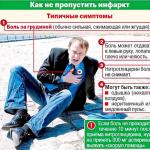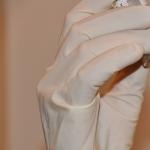Types of stroke
The cause of a stroke is a violation of blood circulation in the brain. Due to lack of nutrition, damage to part of the brain and blockage of blood vessels occurs. As a result, hemorrhage and death of brain tissue occurs.
Depending on the damage to blood vessels, stroke is divided into two types:
- hemorrhagic stroke occurs due to rupture of the vessel and subsequent hemorrhage;
- ischemic stroke is characterized by blockage of cerebral vessels, which can also result in cerebral hemorrhage.
Causes
Stroke, after heart disease and cancer, is the leading cause of death in the world. The common age is 40-60 years. What causes can lead to rupture of the vessel or its blockage?
Schematic representation of a stroke
The main causes leading to severe consequences include:
- high pressure;
- atherosclerosis;
- cardiovascular diseases.
Violation of lipid metabolism in diabetes mellitus leads to the formation of cholesterol plaques, which increases the risk of stroke. Alcohol, smoking, overweight, age are also risk factors.
To avoid this terrible disease, it is necessary to carry out the prevention of the disease. Timely prevention of stroke, several times reduces the risk of its occurrence.
Prevention is divided into primary and secondary:
- primary prevention of stroke is aimed at preventing the occurrence of the disease;
- The primary goal of secondary prevention is to prevent recurrent stroke.
Primary prevention of stroke
Arterial pressure
High blood pressure is one of the main reasons leading to rupture of blood vessels. To prevent the disease, it is necessary to reduce the pressure. The cause of high blood pressure can be blood viscosity, high cholesterol, overweight, kidney problems, diabetes, stress, malnutrition.
It is necessary to exclude coffee, strong tea, fatty and smoked foods from the diet, drink more clean water. Control weight, exercise. If hypertension is caused by certain diseases, constant medical supervision is required.
With increased pressure, antihypertensive drugs should be taken immediately. A constant high blood pressure of just a few millimeters increases the risk of stroke by thirty percent.
Blood cholesterol level
Prevention of stroke includes constant control of blood cholesterol levels. It is necessary to check it once a year - after twenty years, and once every six months - after forty.
"Excess" cholesterol is deposited on the walls of blood vessels in the form of plaques, gradually narrowing the diameter of the vessel and thereby increasing the risk of its rupture. If the cholesterol level is above normal, you should reduce the consumption of fatty foods, such as fatty meats, refined and butter.
Fresh fruits contribute to the processing of cholesterol into cholesterol, which is completely absorbed by the body. Your daily diet should include foods that help lower cholesterol.
Oatmeal, almonds, corn, bran, all legumes will do the best job.
Proper nutrition is the key to success
Proper nutrition is the basis without which stroke prevention is impossible. Reducing sodium (salt) significantly reduces the possibility of disease.
- The optimal salt intake per day is no more than six grams, it is also necessary to minimize the consumption of processed foods: canned fish and meat, ketchups, sausages and other smoked products;
- foods rich in magnesium, potassium, fiber should be constantly included in the diet: a lack of potassium in the body can cause a stroke;
- fresh vegetables and fruits are a source of antioxidants that prevent the appearance of plaques and the development of atherosclerosis;
- cereals, lean meat and fish, seafood, dairy products are the main elements for successful stroke prevention.
Overweight is the path to a stroke
Being overweight doubles the chance of high blood pressure, which leads to heart disease and stroke. The amount of cholesterol in the blood is directly related to body weight.
In people with diabetes, excess weight can trigger the development of type 2 diabetes, in which sugar levels are not controlled by the body.
Uncontrolled diabetes of the second group is the cause of stroke. Stroke prevention is meaningless without losing extra pounds.
Exercise stress
Regular physical activity is the main prevention of stroke. Regular exercises help keep the body in good shape, saturate it with oxygen, improve blood supply to the heart muscle, and significantly reduce pressure.
Physical activity reduces blood sugar and cholesterol, has a positive effect on carbohydrate metabolism, as well as fat metabolism.
Physical activity depends on the age and condition of the body. You can start exercising at any age. Suitable for swimming, running, gymnastics, ordinary walking. In the presence of diseases, it is necessary to consult a doctor.
Cardiovascular disease requires more gentle exercise, so aerobics, running is contraindicated and even dangerous, as they can, on the contrary, cause a stroke.
Bad habits
Smoking is not only a risk factor, but doubles it. Among stroke survivors, there are twice as many smokers than non-smokers. The risk begins to decrease immediately after quitting smoking, and after five years it becomes the same as for non-smokers.
Alcohol in large quantities also leads to a stroke. Everything is good in moderation. A glass of beer or dry red wine every day is a good way to prevent stroke.
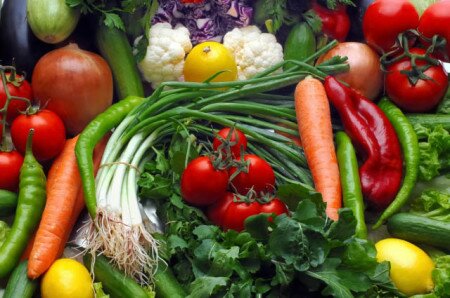
Stop drinking alcohol and cigarettes and live as healthy a life as possible. add fresh vegetables to your diet, for example.
Timely examination
The presence of cardiovascular disease increases the risk of stroke. Therefore, the prevention of stroke and heart attack must necessarily include regular laboratory and instrumental examinations.
Once every six months, it is required to conduct a chemical blood test, do an ECG, ultrasound of the vessels, MRI of the brain. It is also necessary to take vascular drugs.
For the prevention of stroke drugs: Cavinton, Cinnarizine, Glycine, Curantil, you can drink courses 2-3 times a year.
Prevention of recurrent stroke
Medications
After suffering a stroke, the risk of a new stroke increases tenfold, so the prevention of a second stroke becomes vital. It begins to be carried out in the hospital, in parallel with the treatment of the stroke itself.
At first, the main priority is to oxygenate the blood, improve blood supply, restore and control blood pressure.
After a stroke, it is impossible to restore dead nerve cells, so stroke prevention drugs are aimed at treating the consequences of a stroke and preventing a second one.
These can be antidepressants to relieve post-stroke depression, anticonvulsants to stop seizures, and muscle relaxants needed to relieve muscle tension.
Anticoagulants and antiplatelet agents are the main drugs for preventing recurrent stroke. Particular attention should be paid to concomitant and chronic diseases. Their exacerbation is highly undesirable.
Prophylactic drugs play an important role. These include vitamins to restore the immune system, nootropic drugs that increase the stability of the brain with a lack of oxygen. The main actions of nootropics also include the restoration of attention and memory.
Non-drug treatment
In addition to drug treatment, prevention after a stroke must necessarily include physiotherapy exercises, physiotherapy, and massage. It is very important during the rehabilitation period to exclude the occurrence of stressful situations, to limit the load as much as possible.
The complex of these measures aimed at eliminating all risk factors and recurrence of a stroke requires strict compliance from a person. Only in this way, you can avoid a second stroke and return to a full life.
Stroke: prevention. Prevention of stroke and heart attack. Medications to prevent stroke
A stroke, according to WHO statistics, annually takes the life of about 5 million people, about the same number lose the ability to move. This disease is in fourth place among the diseases, the result of which is a fatal outcome, in the first place among the causes of disability. The best way to prevent a stroke is prevention.
Main reasons
Prevention of a stroke begins with an acquaintance with the reasons why there is a failure in the supply of blood to a part of the brain. Factors contributing to a person being at risk:
- arterial hypertension;
- cardiovascular diseases;
- high concentration of cholesterol in the blood;
- atherosclerosis;
- aneurysms of cerebral vessels;
- diabetes;
- malnutrition;
- excess weight;
- bad habits (alcohol, smoking);
- hormonal contraceptives;
- blood clotting disorder;
- constant stress.
By eliminating the threatening factors, a person will reduce the likelihood of a stroke, this is the primary prevention. There is also prophylaxis after a stroke, with which you can prevent the risk of its recurrence.
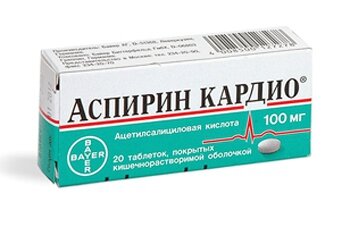
There are also risk factors that cannot be eliminated. Among them are age (from 55 years old), heredity (cases of stroke in close relatives), male gender (men are more likely to suffer from this disease). People in these groups should pay maximum attention to prevention.
blood pressure, sugar, cholesterol
Constant monitoring of blood pressure, blood sugar and cholesterol levels is one of the main concerns of a person who is interested in the prevention of stroke and heart attack. Be sure to purchase devices to regularly check these indicators.
- HELL. 120/80 - blood pressure indicators to strive for. If necessary, antihypertensive therapy (drugs) is prescribed. The need for this may appear if a person has diabetes mellitus, heart failure, threshold arterial hypertension, and so on. Also, bringing the data of blood pressure to the optimal level contributes to the improvement of lifestyle.
- Sugar. Ideally, the concentration of glucose in the blood should not go beyond 3.3-5.5 mmol / l. Certain groups of medications and adherence to a special diet will help to approach these values.
- Cholesterol. Maintaining the proper level of cholesterol (the lower limit is 3.9 mmol / l) will help the transformation of the daily menu. Also, according to indications, a person is prescribed statins - special drugs for the prevention of stroke, which reduce the concentration of cholesterol.
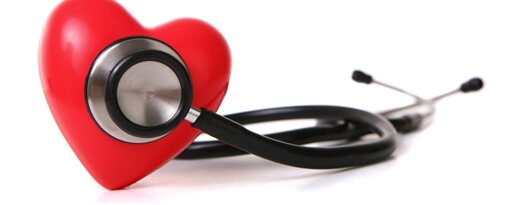
Regular examination
Doctors have a clear opinion about how to avoid a stroke. Prevention, in their opinion, must necessarily include regular examinations in the hospital. In particular, it is recommended to pay attention to this advice to persons who have crossed the threshold of forty years. A list of diagnostic procedures that are desirable to undergo at least once a year (for those at risk, it is better to do this once every six months) should be compiled together with your doctor.
The main examinations that are shown to everyone:
- MRI of the brain;
- Vascular ultrasound;
- chemical analysis of blood.

These diagnostic manipulations are characterized by simplicity, a high level of information content. They help to timely detect cardiovascular diseases, diabetes mellitus, and prevent serious complications that seriously threaten human life. You also need to visit a cardiologist every year.
Dangerous diseases
The best way to prevent a stroke is to prevent and treat (timely) a number of dangerous diseases. A threat to human life is posed by heart disease, primarily arrhythmias. Atrial fibrillation, ventricular flutter, expansion of the chambers of the heart, heart valve defects - all this can cause the formation of blood clots (blood clots), which in the future can lead to blockage of cerebral vessels.
In itself, diabetes mellitus is extremely dangerous, providing an excessive concentration of glucose in the blood. This disease makes the walls of blood vessels brittle and brittle, which can result in a stroke. Atherosclerosis increases this likelihood, as does arterial hypertension.
Another danger is cerebral aneurysms. They can be genetic or formed during life (infection, atherosclerosis, trauma - sources). Thin walls do not cope with blood pressure (especially in combination with hypertension). Possible outcome - hemorrhagic stroke.
Also, do not forget to mention a bleeding disorder in this list. Its increased "liquid" or "thickness" can cause a stroke. "Liquid" blood can lead to bleeding, "thick" - to the appearance of clots that clog the lumen of the vessel.
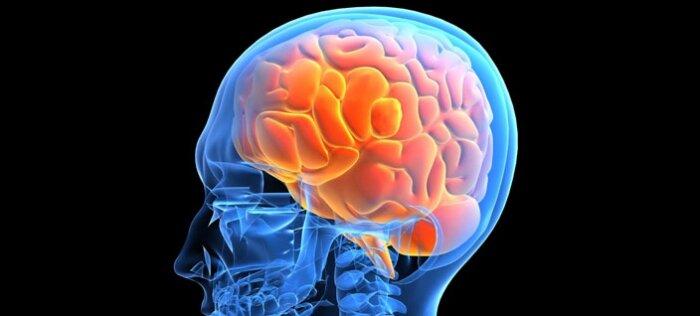
Say goodbye to bad habits
Alcohol abuse, addiction to cigarettes - these bad habits can lead to a sad outcome.
- Prevention of stroke and heart attack should certainly include smoking cessation. Cigarettes, according to doctors, increase the danger by about two times. When combined with alcohol abuse, the risk increases by about 75%. Quite often, just saying goodbye to nicotine is enough for a person to leave the group of those who are seriously threatened with cerebral hemorrhage.
- Alcohol is dangerous because it increases blood pressure. Dry red wine is considered the least dangerous in this regard; a number of doctors even recommend it for preventive purposes. However, you need to understand that this drink is useful only in purely symbolic doses, its active inclusion in the menu will not be beneficial, just like drinking vodka, cognac, beer, champagne.
Weight loss
Excess weight is dangerous for a person, the prevention of stroke in men and women must necessarily include getting rid of it. The “extra” kilograms that overweight people carry on themselves contribute to the appearance of the main causes leading to cerebral hemorrhage. These are diseases of the cardiovascular system, hypertension, diabetes mellitus.

According to studies, parting with 5 kilograms is enough for blood pressure to decrease, blood cholesterol levels to return to normal. This is achieved through a special diet and exercise. It is advisable to try to get closer to your ideal weight, having previously calculated it. Divide your weight (in kg) by your height in meters squared to get your body mass index. Ideally, the value will be in the range of 18.5-25 kg / sq. m.
Sports are extremely beneficial. They not only reduce blood pressure, rid the body of unnecessary cholesterol. Physical exercises also normalize the state of the heart and blood vessels, drive off excess weight. Effective stroke prevention - running, walking long distances, cycling, swimming. Devoting at least half an hour a day to this, a person moves further and further away from danger. Even with excess weight, health problems that do not allow you to play sports, you can include healthy walks in the fresh air in your day.
Proper nutrition
Prevention of ischemic stroke (as well as hemorrhagic) always implies strict adherence to a special diet. According to medical research, the products that are part of the standard diet of a modern person increase the risk of this disease by 58%.

In fact, "dietary" prevention includes the three most important steps to promote health:
- reduction in cholesterol levels;
- saturation of the diet with magnesium, potassium;
- reducing the amount of salt (reducing the amount of sodium).
Reducing cholesterol is the most important task in the fight against such a terrible enemy as a stroke, the danger will be reduced by about 25%. The weekly diet should be as saturated as possible with dishes that reduce its level. These are almonds, soy products, oatmeal. Pomegranates, kiwi effectively help to cleanse the body.
Vegetables and fruits are effective suppliers of antioxidants that relieve inflammation and prevent the formation of plaque on the walls of arteries. It is they who help in improving blood flow, if consumed fresh, achieving maximum diversity. Be sure to include banana and prunes in the menu, known as a source of useful potassium. Also need spinach and beans, skimmed milk (2 glasses per day), halibut.
Berries are rich in vitamins. You should definitely fall in love with cherries and raspberries. They contain salicylic acid, which prevents excessive blood clotting, which helps prevent the formation of blood clots.
To prevent such a nuisance as a stroke, prevention and treatment should include reducing the amount of sodium supplied with food. In this regard, processed foods are the most dangerous, for example, ketchups and factory-made sauces, which are much more harmful than chips. It is recommended to exclude processed cheese, stew, ham from the diet, try not to salt the dishes during the cooking process.
The best cooking methods are boiling, stewing. Such dishes are much healthier than fried ones.
aspirin for stroke
Prevention after a stroke (prevention, reduction of the likelihood of recurrence) involves the patient taking certain medications. As a rule, doctors prescribe two types of drugs to patients: antiplatelet agents and anticoagulants.
- Antiplatelet agents are agents that serve to prevent the formation of blood clots. As you know, the occurrence of blood clots is provided by platelets (special blood cells) that have grown together with each other. It is precisely to prevent the gluing process that is the main task facing the preparations of this group. Medications belonging to this group are Aspirin, Clopidogrel, Dipyramol.
- Anticoagulants are drugs that reduce the chance of blood clots or blood clots. It can be "Warfarin", "Heparin". For home use, "Warfarin" is prescribed, the action of which continues for a long time period. Basically, it is prescribed to reduce the risk of stroke, which can be the result of arrhythmias. In a hospital setting, "Heparin" is put, which works for a limited time.
It must be remembered that the dose must be selected individually, in each case it is different. Therefore, self-activity is dangerous, drug therapy can only be prescribed by a professional doctor. The most popular at the moment is aspirin. For the prevention of stroke, this remedy is prescribed to patients who have a heart rhythm disorder. Other medications may be selected as indicated.
Threat of a second stroke
Prevention of stroke with drugs is far from the only way to prevent its recurrence. If the patient has already encountered this disease, he will certainly be prescribed physiotherapy, physiotherapy exercises, medical massage sessions. The rehabilitation period implies the maximum possible reduction in the load, careful avoidance of situations that can cause stress and depression.
For a person who has already had a stroke, it is extremely important to give up alcohol and smoking. The success of preventing a relapse also depends on how carefully the patient will comply with medical prescriptions and regularly take prescribed medications. A balanced diet, a complete rejection of harmful foods, and the intake of special vitamin complexes that make up for the lack of valuable elements in the body are necessary.
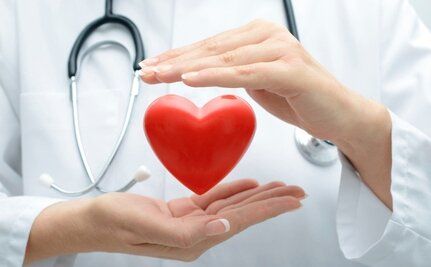
The signal that informs a person about an impending re-stroke is the level of blood pressure. Its measurement should turn into a daily habit, you should definitely buy a tonometer. Signs of danger - the lower bar, which is 90-105, the upper one - 140-180. The doctor will also prescribe medications that will help maintain normal blood pressure.
Traditional medicine recipes
Prevention of stroke with medicines, diet, proper lifestyle - all this is important, but you can also use recipes taken from traditional medicine. Many of them have been tested for more than one century.
- Ordinary tincture of calendula is an effective remedy against stroke. You can buy it at a pharmacy or make your own. You need to take 20 grams of a medicinal plant, pour 100 ml of pure alcohol. The tincture is prepared for two weeks, then filtered. Daily dose - 30 drops three times a day.
- Horse chestnut is another popular "tool" to prevent this threat. The tincture is very easy to prepare. Half a liter of vodka and 50 grams of chestnut are mixed. Daily dose - 40 drops three times a day.
- Helps in the fight against stroke and swamp cleaner. A teaspoon of herbs is dissolved in 0.5 liters of boiled water. The recommended dose is one tablespoon per day. It is important to avoid overdose, as the cleaner is slightly poisonous.
A stroke is dangerous to human life and health, so strict adherence to the above recommendations is extremely important. Preventing a threat is much easier than dealing with the consequences.
Preventive measures to prevent stroke
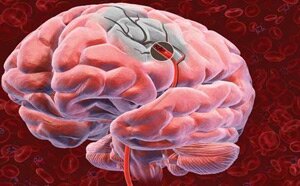
Prevention of stroke, allows a person to avoid serious complications
Stroke prevention is very important, as it allows a person to avoid serious complications that this disease brings with it, and it is also a good opportunity to save and thereby prolong one's life. Preventive measures are important for everyone, but they are especially beneficial for those at risk. Perhaps such people have already had an attack, and they need to avoid its recurrence. Someone has comorbidities that can lead to the development of a stroke. In these cases, it is especially necessary to make every effort to avoid a stroke.
Of course, it is best to do this in consultation with your doctor. After the examination, he will be best of all able to explain what can and should be done, and what is undesirable to do. Prevention of this disease includes both the use of drugs and the use of traditional medicine. However, it is equally important to lead a healthy lifestyle at all times and avoid stress. These measures are commonly referred to as primary stroke prevention. There is a lot of talk about a healthy lifestyle. In this article, we will talk about what drugs a doctor can prescribe to prevent an attack and what folk remedies can be used for the same purpose.
Medicines
There are several ways to use drugs to prevent stroke.
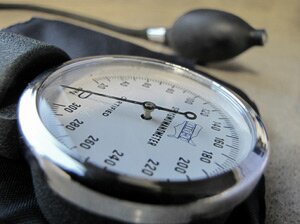
Antihypertensive therapy is an excellent method of dealing with the disease
Antihypertensive therapy. High blood pressure can be treated fairly easily. This measure helps to prevent both ischemic and hemorrhagic stroke. Hypertension can cause hypertensive crises, which are accompanied by a sharp increase in pressure. Because of this, multiple aneurysms are formed with the development of cerebral hemorrhage. Swelling of the walls of arterioles or cerebral arteries can also occur, their lumens can narrow or completely close, which leads to the development of small deep cerebral infarcts. Prevention of stroke and heart attack in this case is carried out with the help of antihypertensive drugs. These include calcium channel blockers, ACE inhibitors, angiotensin II receptor blockers, and diuretics. Such drugs are taken for a long time until the pressure stabilizes. Correction of therapy is carried out only by a doctor.
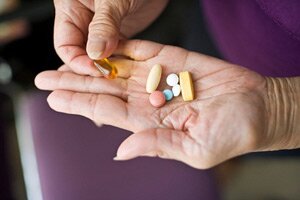
The use of statins maintains normal blood cholesterol levels
Use of statins or lipid-lowering therapy. Due to the development of hypercholesterolemia and lipid metabolism disorders, atherosclerosis occurs, which is a significant cause in the development of stroke. Being deposited on the inner choroid, cholesterol forms atherosclerotic plaques, which impede the flow of blood through the vessels. Part of the plaque can come off, which leads to obliteration of the cerebral artery, which causes a cerebral infarction. It is worth noting that a prolonged increase in cholesterol levels by ten percent increases the risk of cerebral infarction by about thirty percent. Therefore, it is very important to take drugs that lower plasma lipid levels, as well as prevent increased formation and deposition of cholesterol plaques. These statins include niacin, pravastatin, and simvastatin.
Prevention of recurrent stroke also includes antithrombotic therapy. Today, aspirin, clopidogrel, ticlopidine and dipyridamole are mainly used. Antithrombotic therapy for the purpose of prevention lasts a long time. Its duration can be delayed for several years. It may be prescribed after several days of antiplatelet therapy. It is very important to monitor platelet aggregation at all times. An increase in platelet aggregation activity in those at risk of stroke is an important criterion for prescribing antiplatelet agents.
However, antithrombotic drugs should be prescribed with caution, as they have contraindications. Adverse reactions such as aspirin asthma, liver dysfunction, and other complications may also occur. For these and other side effects, milder oral medications such as lomoparan and heparinoids are prescribed. If activated thromboplastin time is controlled during their use, their use will be relatively safe.
Prevention with folk remedies
The use of folk remedies should be reasonable. Today there are a lot of different recipes, the use of which promises to make the human condition much better. However, you need to be careful, since even such drugs have contraindications. In addition, one should take into account not only the general condition of a person, but also the state of various organs of his body. Therefore, the prevention of stroke with folk remedies should take place on the recommendation of a doctor and under his supervision. We give examples of the means that are most often used for this purpose.
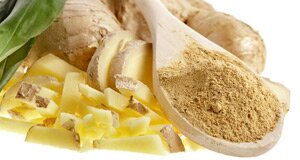
Ginger is a unique product with beneficial properties.
All the remedies listed in this article will benefit if you follow all the recommendations of the doctor and observe regularity. Stroke is a really dangerous disease that threatens human life and health. Therefore, let's be attentive to our lifestyle so that defeats of this nature bypass us!

